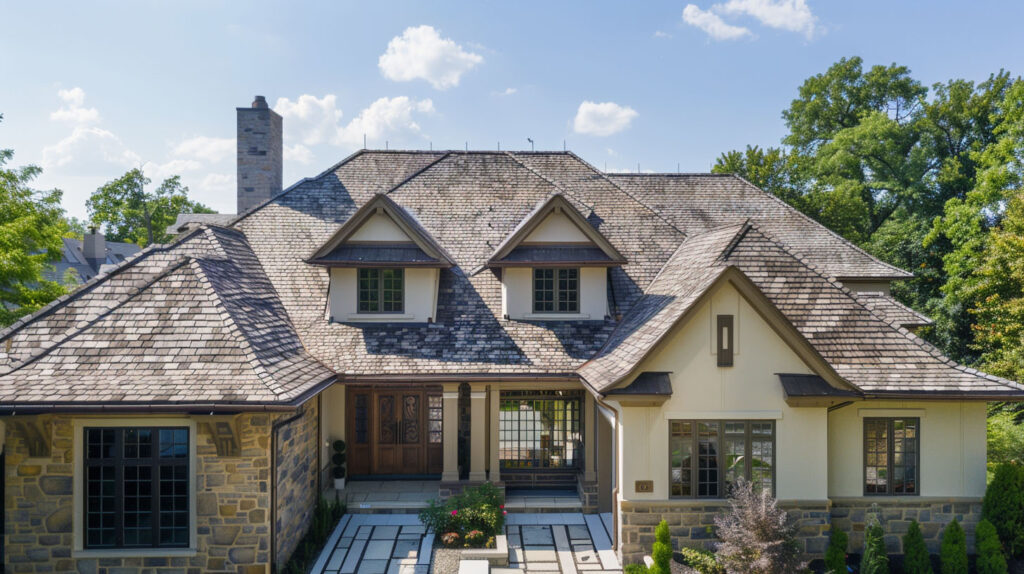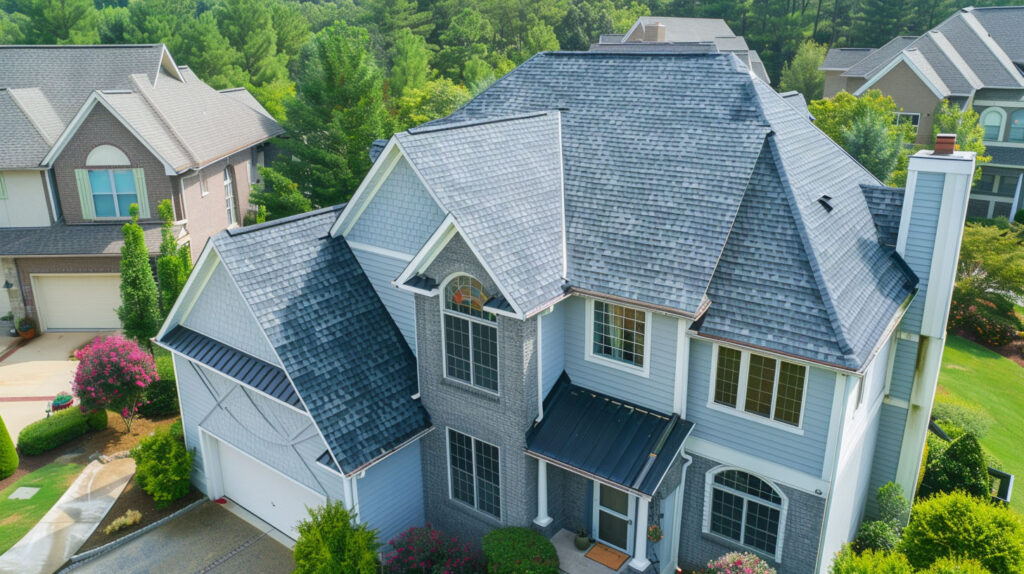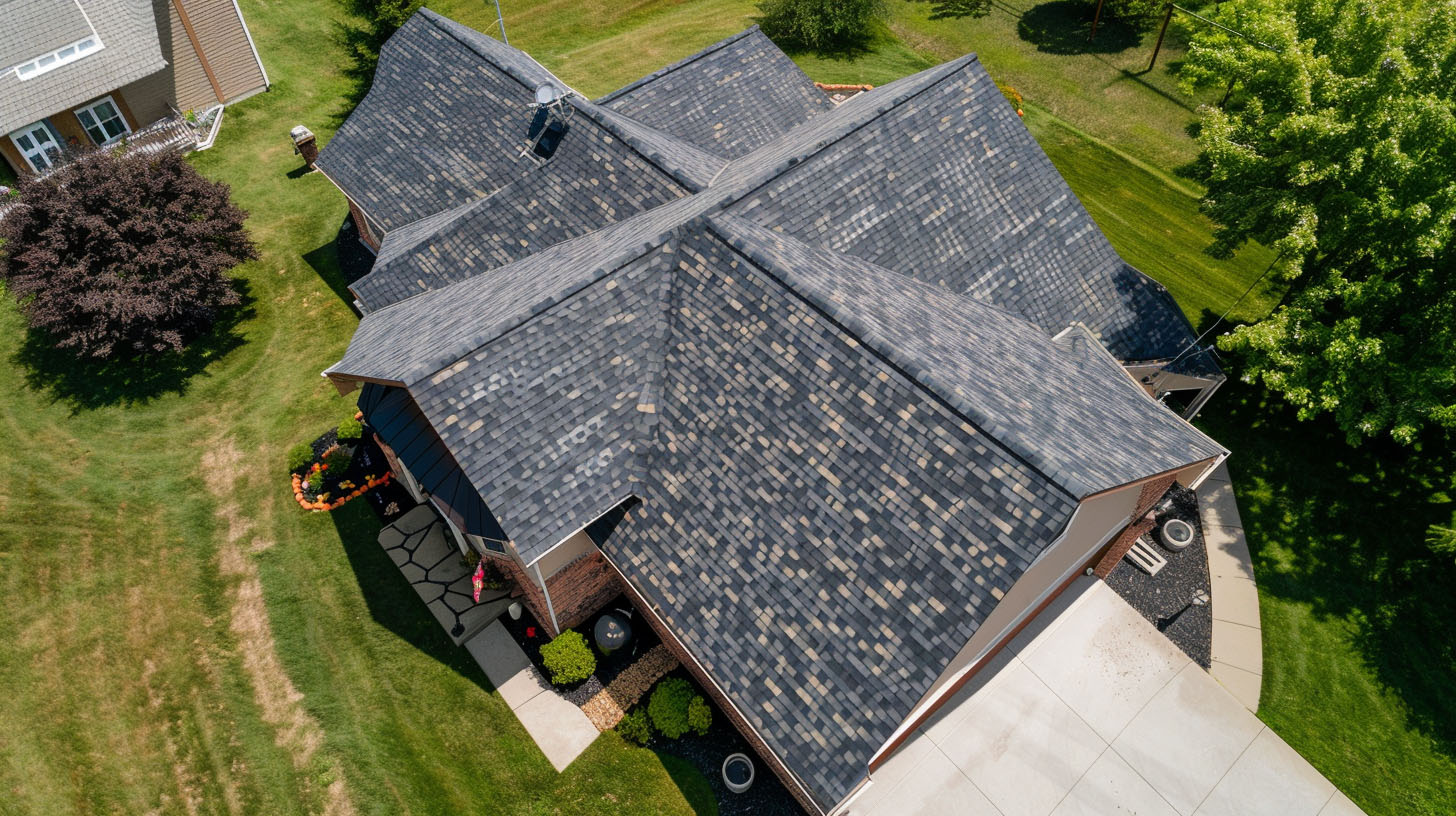Do Lighter Roof Colors Really Keep Homes Cooler?
When considering how to keep your home comfortable during Long Beach’s sunny days, roof color plays a pivotal role in your home’s energy efficiency. Lighter roof colors reflect heat, contributing to a cooler indoor environment, while darker roofs absorb more sunlight, increasing your reliance on air conditioning. Choosing the right roofing color and material isn’t just about appearance; it’s about improving comfort and lowering energy consumption. Let’s explore how your roof can help you stay cooler in Long Beach’s warm weather, with insights from Specialist Roofing & Repair.
Science Behind Roof Color and Heat Absorption
Roof color significantly influences heat absorption and, consequently, a home’s energy efficiency. Lighter colors reflect sunlight, which helps keep indoor temperatures lower, especially during hot summer months. In contrast, dark roofs absorb much heat, raising energy consumption through increased reliance on air conditioning. Reflective roofing materials, such as metal roofing and light-colored shingles, offer energy savings while enhancing curb appeal. Opting for the right roof color plays a crucial role in achieving a cooler and more energy-efficient home.
How Light Colors Reflect Sunlight
Lighter colors possess an inherent ability to reflect sunlight, effectively minimizing heat absorption. This characteristic contributes significantly to a home’s energy efficiency, particularly during hot summer months. Reflective roofing materials, like cool roof coatings, can dramatically reduce the amount of heat that enters a dwelling, leading to lower indoor temperatures. Consequently, utilizing lighter roof colors not only enhances curb appeal but also plays a crucial role in maintaining comfortable living conditions while driving down energy costs.

The Impact of Dark Roofs on Indoor Temperatures
Dark roofs significantly increase indoor temperatures, particularly during the hot summer months. Such roofs absorb a considerable amount of heat from the sun’s rays, leading to elevated cooling system demands. This can result in higher energy consumption and increased energy bills as air conditioning units work harder to maintain comfortable indoor environments. The use of dark roof shingles can exacerbate the urban heat island effect, not only affecting the specific home but also impacting the surrounding community’s overall temperature.
Factors That Affect Roof Cooling Beyond Color
While the color of your roof matters, other factors such as roofing material, insulation, and ventilation significantly impact how effectively your roof regulates heat. For example, metal and asphalt shingles differ in their capacity to reflect heat, influencing overall cooling efficiency.
Similarly, proper insulation enhances your roof’s ability to block heat from entering your home, and good ventilation ensures hot air escapes promptly. Combining these elements with the right color can optimise your roof’s cooling performance, providing comfort in Long Beach’s hot climate.
Importance of Roof Material Selection
Selecting the right roofing material plays a significant role in enhancing a home’s energy efficiency, particularly in hot climates. Materials like metal roofs and certain types of shingles come with inherent reflective properties, helping to minimize heat absorption. Moreover, cool roof coatings can further boost a roof’s performance by reflecting more sunlight away. The combined effect of lighter colors and suitable materials not only keeps indoor temperatures comfortable but also contributes to long-term energy savings, reducing air conditioning costs during the sweltering summer months.
Role of Insulation and Ventilation in Home Comfort
Building a comfortable home goes beyond merely selecting the right roof color. Insulation plays a critical role in a home’s energy efficiency by slowing heat transfer, ensuring that indoor temperatures remain stable, especially during the hot summer months. Complementing this, effective ventilation facilitates airflow, reducing the amount of heat trapped in living spaces.
Together, these elements combat the urban heat island effect and can lead to significant energy savings. A well-insulated and ventilated roof contributes to the overall cooling system’s efficiency, making your home cooler and enhancing comfort levels.

Best Roofing Options for Hot Climates in Long Beach, CA
Additional factors such as reflective coatings and high-quality insulation further enhance your roof’s ability to combat Long Beach’s intense heat. Discussing choices with a qualified roofing contractor ensures you select a solution tailored to your needs, keeping your home comfortable and energy-efficient throughout the year.
Recommended Cool Roof Materials and Technologies
Specialised cool roof materials and coatings offer impressive heat-reflective properties. Consider these options:
- Cool Roof Coatings: Reduces heat absorption, keeping roofs cooler regardless of color.
- Light-Colored Asphalt Shingles: Combines cost efficiency with reflective capabilities.
- Metal Roofs with Reflective Finishes: Perfect for sunny climates, offering long-term energy savings.
- Advanced Ceramics: Provides heat resistance without compromising visual appeal.
For Long Beach, CA homeowners, roofing experts often recommend certified products. Choosing cool roof technologies optimises your home’s energy efficiency while ensuring durability and comfort.
Comparing Popular Brands: Owens Corning, Polyglass, GAF, CertainTeed, ASC
Owens Corning, Polyglass, GAF, CertainTeed, and ASC each offer unique advantages in terms of cool roofing materials. Owens Corning stands out with its energy-efficient asphalt shingles, while Polyglass specializes in reflective coatings designed to minimize heat absorption. GAF emphasizes advanced technology for sustainable roofing solutions, whereas CertainTeed focuses on aesthetic appeal alongside performance. ASC rounds out the options with durable metal roofing suited for hot climates. Each brand contributes to enhancing a home’s energy efficiency, ultimately helping to lower energy bills during hot summer months.
What’s Next
In summary, choosing the right roof color plays a significant role in enhancing a home’s energy efficiency, particularly in hot climates. Lighter colors reflect much sunlight, thereby reducing heat absorption and keeping indoor temperatures lower. While roofing material and proper insulation are essential factors, the cumulative effects of a reflective roof system can lead to substantial energy savings and lower energy bills. Ultimately, strategic selection during a roof replacement can ensure a more comfortable living environment while mitigating the urban heat island effect.

Frequently Asked Questions
Does a lighter color roof keep your house cooler?
Yes, lighter roof colors reflect more sunlight, leading to reduced heat absorption and cooler indoor temperatures. This translates to less reliance on air conditioning and improved energy efficiency, making lighter roofs a popular choice for hot climates like Long Beach.
Which color roof stays coolest?
Light-colored roofs, such as white, beige, or light gray, stay coolest due to their ability to reflect much sunlight. Certified cool roofs with reflective coatings enhance these properties further, making the preferred choice for summer months and hot regions.
Read our blog: Understanding Roof Load Ratings and Safety



